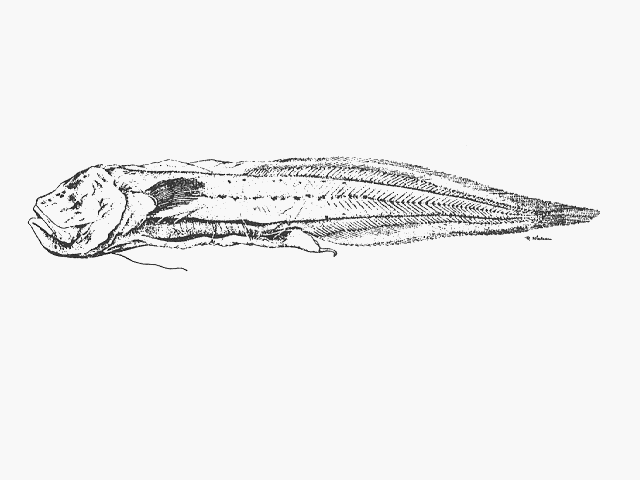| Bythitidae (Livebearing brotulas) |
| 18 cm TL (male/unsexed) |
|
bathydemersal; marine; depth range 386 - 1525 m |
| Indo-West Pacific: off South Africa, Madagascar and Mozambique to Japan, the Philippines and Australia. |
|
Dorsal soft rays (total): 75-83; Anal soft rays: 55-66; Vertebrae: 74-79. This species is distinguished by the following characters: when preserved, distinct, dark brown pigmentation dorsally between head and dorsal fin and on the sides of the light brown body; fresh specimens when newly caught with dark blue-like pigmentation on the peritoneum and body faintly reddish; D 75-83, A 55-66; vertebrae 74-79; vomer with up to four fangs, dentary with up to five fangs; penis length up to 10% SL, proximally covered by a large dorsal clasper and a smaller ventral clasper protected ventrally by a well-developed fleshy hood; eyes not externally visible in specimens longer than about 14.0 cm SL, while eyes of smaller specimens appear as a narrow, dark ring surrounding lighter tissue (Ref. 128809). |
| Rare species (Ref. 34024). Viviparous. Relatively often caught by commercial trawlers for it also occurs on the upper continental slope (Ref. 128809). |
|
Least Concern (LC); Date assessed: 16 August 2019 Ref. (130435)
|
| harmless |
Source and more info: www.fishbase.org. For personal, classroom, and other internal use only. Not for publication.

